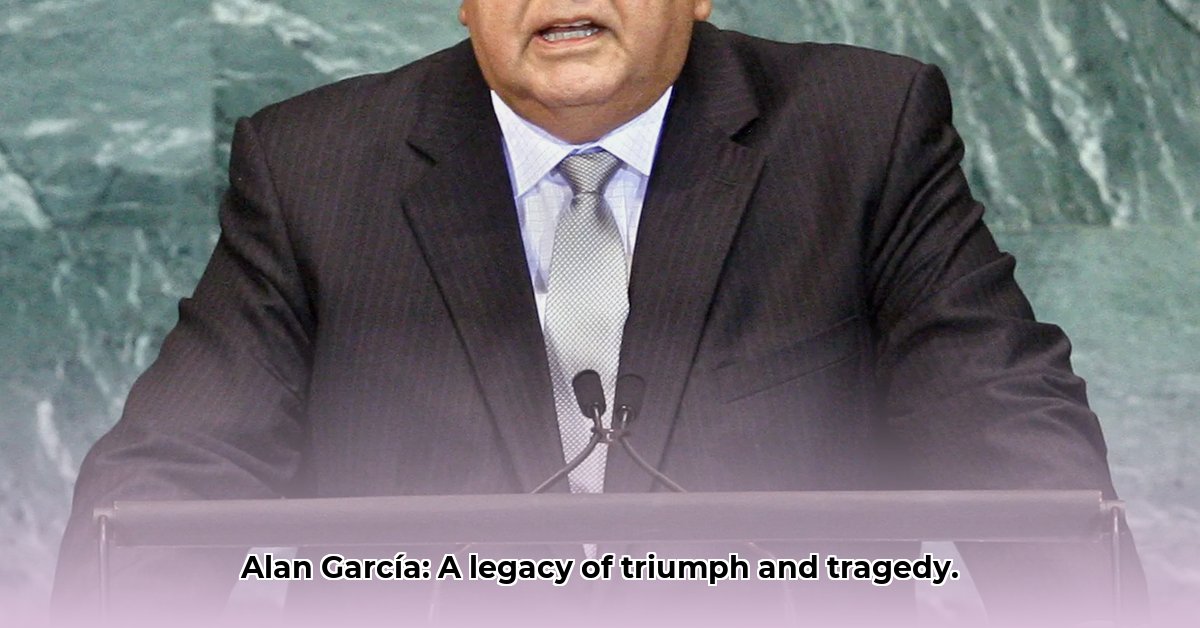Alan García Pérez’s life was a dramatic story of political ascendance and devastating downfall, leaving behind a complex and controversial legacy that continues to divide opinions in Peru. His journey, marked by charisma, economic turbulence, and ultimately, tragedy, provides a rich case study of leadership, highlighting both its triumphs and its profound failures.
The Ascent of a Charismatic Leader and Peruvian Politics
Alan García rose to prominence on a wave of charisma and captivating public speaking skills. He forged strong connections with ordinary Peruvians. This charisma, combined with promises of change, propelled him to victory in the 1985 presidential election at the young age of 36. García represented a departure from the political order, offering a vision of a transformed nation to a populace yearning for something new. His youthful energy and passionate rhetoric ignited a sense of hope, captivating a nation eager for change.
Economic Aspirations and Peruvian Fiscal Policy
García’s first term was characterized by ambitious economic policies aimed at reshaping Peru’s financial landscape. Initially, there were positive signs of economic growth. However, this optimism proved short-lived. Inflation surged, plunging the country into a severe economic crisis by the end of his first presidency. The hyperinflation left scars on the Peruvian economy and the memories of his supporters.
His second presidency, from 2006 to 2011, presented a contrasting picture. He adopted a more moderate economic approach, and this shift yielded different results. Peru experienced economic growth during this period. Some argue that this change reflected a genuine learning curve on García’s part; others suggest that external factors, such as favorable global economic conditions, played a more significant role.
Corruption Allegations and Political Downfall
Throughout his political career, García faced accusations of corruption that haunted his political ambitions. Although investigations were launched, concrete evidence often remained elusive, fueling public debate and controversy. The Odebrecht scandal irrevocably altered public perception of his legacy. The involvement of García, though debated by his supporters, contributed to his dramatic death.
A Divided Legacy Contrasting Perspectives on Peruvian Governance
Alan García Pérez’s legacy as president of Peru continues to be a divisive topic in Peruvian society. His supporters cling to memories of his charismatic leadership and the economic progress seen during his second term. They recall a leader who dared to envision a different future for Peru and worked to make it a reality, despite the setbacks. For critics, the authoritarian tendencies of his early years and the corruption scandals outweigh any positive achievements. His first term was marked by human rights concerns. His death, amidst ongoing investigations into the Odebrecht scandal, served to further crystallize this division.
To fully grasp García’s impact on Peru, a balanced perspective is crucial. We need to consider how his policies affected diverse segments of society, from the wealthiest elites to the poorest populations, and the important middle class. A thorough analysis requires examining both the intended and unintended consequences of his decisions and policies.
Lessons Learned and Future Implications for Peru
The life and career of Alan García Pérez serve as a cautionary tale, underscoring the vulnerability of democratic institutions and the profound repercussions of corruption. His story offers lessons for Peru and other nations in Latin America grappling with similar challenges. Strengthening anti-corruption agencies, promoting transparency in government operations, and enhancing civic engagement are critical steps toward preventing similar crises in the future.
Stakeholders and Actions Promoting Government Stability
| Stakeholder Group | Short-Term Actions | Long-Term Actions |
|---|---|---|
| Peruvian Historians | Critical analysis of primary source materials. | Dissemination of comprehensive, nuanced accounts of his impact. |
| Peruvian Government | Implementation of stronger anti-corruption measures. | Fostering governmental transparency and accountability systems. |
| International Organizations | Providing support for good governance and stability. | Regional collaboration against corruption. |
| Peruvian Citizens | Active engagement in civic life, promoting accountability. | Supporting initiatives that promote civic education and responsible governance. |
The story of Alan García Pérez is far from over. Ongoing research will continue to illuminate different facets of his life and times, perhaps even leading to a reassessment of our current understanding. His legacy will undeniably remain a subject of intense debate and analysis for years to come.
How Did Alan García’s Economic Policies Impact Different Socioeconomic Groups in Peru?
Alan García’s two presidential terms (1985-1990 and 2006-2011) provide a case study in the relationship between economic policy, social change, and political legacy. His approaches differed, resulting in different outcomes for Peru’s population.
The “Heterodox” Experiment: Radical Change and Hyperinflation
García’s first presidency began with economic policies that defied fiscal strategy. He aimed to reduce Peru’s debt burden, limiting debt repayment to 10% of export earnings and imposing price controls. He also nationalized banks. Hyperinflation spiraled, reaching 7,649% in 1990. During this period, it devastated most. The poorest suffered most acutely, facing soaring prices and dwindling job prospects. Poverty skyrocketed, jumping from 41.6% to 55% by 1991. Malnutrition became widespread. Even the middle class felt the pinch. This period demonstrates how unorthodox policies can unravel rapidly, particularly in unstable political and economic environments.
The Neoliberal Turn: Economic Growth and Social Inequality
García’s second term marked a shift as he embraced neoliberal principles like attracting foreign investment and promoting free markets. High economic growth rates, exceeding 8% annually, were achieved during this period. Inflation was tamed. However, the distribution of this wealth remained uneven. While poverty rates decreased, inequalities persisted. Indigenous communities continued to lag behind. The benefits of economic expansion didn’t reach all corners of Peruvian society.
Contrasting Impacts Across Socioeconomic Groups and the Fiscal Effects
The differential impact of García’s policies becomes clear by exploring the experiences of various groups.
| Socioeconomic Group | 1985-1990 (Heterodox) | 2006-2011 (Neoliberal) |
|---|---|---|
| Poorest | Devastating; hyperinflation, soaring unemployment, widespread malnutrition and poverty increased drastically. | Some improvement in poverty rates; however, persistent inequality. |
| Middle Class | Significant losses in purchasing power; economic insecurity. | Relative stability; some experienced economic growth, but many still faced insecurity. |
| Wealthy | Varied experiences; some benefited from initial policies; others saw significant losses during hyperinflation. | Primarily benefited from economic growth. |
| Indigenous Communities | Disproportionately impacted by hyperinflation and poverty. | Continued marginalization and inequality despite overall economic growth. |
- García’s first term’s heterodox economics led to hyperinflation and widespread poverty, impacting all sectors negatively, but hitting the poor and vulnerable most severely.
- His second term’s embrace of neoliberal policies spurred economic growth but failed to address social inequalities, leaving many populations marginalized.
- The legacy of García’s economic policies remains debated, highlighting economic growth and social equity.
Alan García’s APRA Party Influence on Peruvian Politics: Analysis and Impact
Key Takeaways:
- Alan García’s two presidencies reflected the contradictions within Alan García’s APRA Party. His first term was turbulent.
- Water Mill Electricity Generator Provides Free Home Power - December 16, 2025
- Water Wheel Electric Generator Provides Free Home Electricity - December 15, 2025
- Choosing the Right Portable Hydro Turbine for Your Needs - December 14, 2025
















